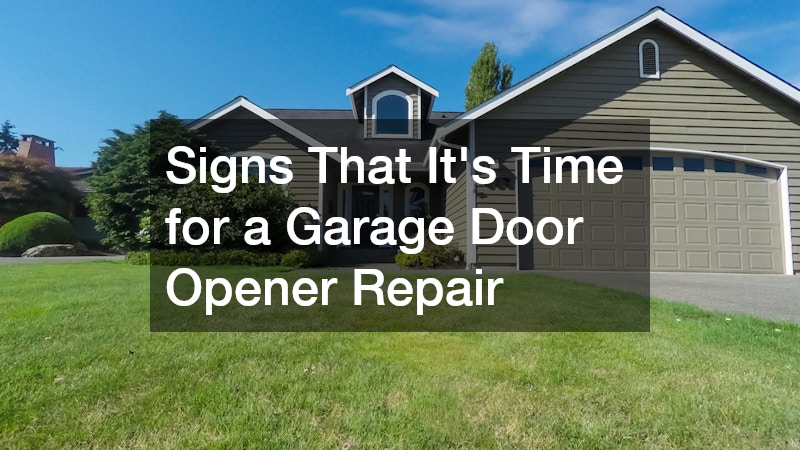Vintage roof tiles offer a timeless aesthetic that continues to captivate homeowners, designers, and builders alike. Their historical roots and visual charm make them a compelling choice for those looking to enhance the architectural authenticity of their homes. The allure of these tiles lies not only in their old-world craftsmanship but also in their ability to blend seamlessly with various architectural styles, from Tudor cottages to Mediterranean villas. Over the years, there has been a resurgence in their popularity as homeowners seek sustainable and character-rich roofing options.
What sets vintage roof tiles apart is their ability to tell a story. Each tile carries a legacy of durability, artistry, and architectural elegance that modern alternatives often lack. They complement both residential construction and commercial roofing services, offering a unique aesthetic for structures of all types. Furthermore, vintage tiles are often reclaimed and reused, aligning with today’s sustainability values. This growing interest has encouraged many a roofing company and restoration contractor to specialise in vintage tile sourcing and installation. For those embarking on a heritage home renovation or simply wishing to incorporate vintage charm into modern architecture, understanding the best vintage roof tile options is essential. This comprehensive guide explores everything from tile characteristics to sourcing, maintenance, and cost considerations.

1. What Characteristics Define Vintage Roof Tiles?
Vintage roof tiles are distinct in their aesthetic and material composition. These tiles are typically crafted from natural clay or slate, offering remarkable durability and weather resistance. What differentiates them from contemporary tiles is their artisanal craftsmanship. Historically, vintage tiles were handmade or moulded using techniques that added unique textures and imperfections, which modern mass production cannot replicate. This tactile quality and the natural weathering over time give vintage tiles a rich patina and depth that enhance their visual appeal.
The historical significance of vintage tiles cannot be overstated. They are often tied to specific architectural movements and regional styles, contributing to the cultural heritage of a building. For example, Spanish-style barrel tiles and French flat shingle tiles reflect regional identities and are sought after for restoration projects. The natural weathering process, including subtle colour changes and surface texturing, adds character that new tiles simply cannot match. Identifying authentic vintage tiles involves examining their edges, material density, and surface finish.
Moreover, a reputable restoration contractor or roofing company familiar with these materials can provide valuable insight into authenticity. These professionals often maintain collections of salvaged tiles or connections with specialised suppliers. Whether being used for a roof replacement or incorporated into decks or other architectural elements, vintage roof tiles bring a sense of history and artistry to any project.
2. How to Select the Best Vintage Roof Tiles for Your Home?
Selecting the best vintage roof tiles for your home involves a balance of aesthetic, functional, and financial considerations. The first step is evaluating your home’s architectural style. Certain vintage tiles are better suited to specific designs—Spanish tiles pair beautifully with stucco exteriors, while flat shingle tiles complement Victorian and Colonial homes. Working with an experienced roofing company ensures that your selection aligns with the structural integrity and design of your house.
Colour and texture play a significant role in the selection process. Vintage tiles come in a range of earthy hues and finishes, shaped by decades of exposure to the elements. Their natural patina can either contrast or complement other materials like wood, brick, or stone. Durability and weather resistance are also paramount. Some vintage tiles, especially those made from terracotta or slate, offer excellent longevity, making them ideal for various climates.
Budget is another crucial factor. Authentic vintage roof tiles can be more costly due to their rarity and the labour involved in installation. However, this cost is often offset by their durability and low maintenance. Consulting with a restoration contractor or roofing company ensures a realistic budget and helps you avoid overpriced or inauthentic options. Whether part of a full roof replacement or a unique addition to residential construction, these tiles provide both form and function.
3. What Are the Most Popular Vintage Roof Tile Styles?
Vintage roof tiles are available in a wide range of styles, each with its own historical roots and aesthetic advantages. Among the most popular are Spanish and Mediterranean tiles, known for their curved profiles and rich, earthy tones. These tiles are ideal for warm climates and pair well with stucco or adobe-style homes. Their ability to channel water efficiently and their classic appearance make them a favourite for both residential and commercial roofing services.
Barrel or Mission tiles are another widely used vintage style. Originally handcrafted, these semi-cylindrical tiles create a distinctive, ridged appearance that enhances both drainage and aesthetic depth. French and European styles offer another layer of elegance. These flat, overlapping tiles often feature subtle engravings or surface textures and are perfect for steeply pitched roofs. Interlocking tiles, designed to snap together, were early innovations that added durability and ease of installation, ideal for vintage home restoration.
Flat shingle tiles, common in early American architecture, offer a more subdued and refined look. These tiles often appear in historical renovations, especially in heritage homes. Each of these styles can be integrated into various home designs, provided the correct installation techniques are used. Roofers with experience in vintage tile installation can help ensure historical accuracy and structural integrity, whether the project involves roof replacement or restoration of period-specific decks.

4. Where Can You Source Authentic Vintage Roof Tiles?
Finding authentic vintage roof tiles requires a bit of diligence and a good network. Antique and salvage shops are excellent starting points. These businesses often carry tiles reclaimed from demolished or renovated buildings, offering a genuine patina that cannot be fabricated. Online marketplaces also offer a wide array of vintage tiles, although careful vetting of sellers and product descriptions is essential to ensure authenticity and quality.
Dedicated tile distributors are another valuable resource. These suppliers often specialise in heritage roofing materials and may offer matching services for projects requiring roof replacement of specific vintage styles. Local craftsmen and artisans may also be able to create custom tiles that match original designs, especially when dealing with rare or region-specific patterns.
Networking with other homeowners, roofers, and restoration contractors can lead to trusted referrals and hidden gem suppliers. Social media groups, forums, and industry events often provide leads on reputable sources. For homeowners undergoing residential construction or upgrades involving vintage elements like decks and roofs, these contacts are invaluable. In many cases, your roofing company or plumbing service provider may have existing relationships with salvage suppliers, streamlining the acquisition process.
5. How to Maintain and Preserve Vintage Roof Tiles?
Maintenance is key to preserving the beauty and functionality of vintage roof tiles. Regular inspections and cleaning help identify potential issues such as moss build-up, broken tiles, or underlying structural damage. Cleaning should be gentle, using soft brushes and low-pressure water to avoid damaging the tiles’ surface or natural patina. Avoid harsh chemicals, which can strip away protective layers and alter the tile’s appearance.
Structural integrity should also be assessed periodically, especially in older homes. Over time, the underlayment and support structures may degrade, affecting tile performance. Repair techniques for vintage tiles differ from those used with modern materials. Cracked or chipped tiles should be replaced with matching pieces to maintain aesthetic continuity. When sourcing exact matches isn’t possible, skilled restoration contractors can often replicate the appearance of the original tile.
Sealing and waterproofing treatments can extend the life of vintage tiles, especially in climates with heavy rainfall. Professional restoration services are highly recommended for major repairs or full roof replacement projects involving vintage tiles. Many roofers now specialise in such preservation work and understand how to integrate modern waterproofing techniques without compromising historical aesthetics. This approach ensures your vintage roofing remains as durable and elegant as ever, whether protecting living spaces or architectural features like decks.
6. What Are the Environmental Benefits of Vintage Roof Tiles?
Vintage roof tiles offer numerous environmental benefits, making them a smart choice for eco-conscious homeowners. First and foremost, using reclaimed or repurposed tiles reduces the need for new materials, cutting down on manufacturing emissions and resource extraction. This form of recycling helps decrease construction waste and supports sustainable building practices. Many roofing company professionals now recommend vintage tiles for their green credentials.
Additionally, their durability reduces the frequency of roof replacements and associated waste. This makes them particularly appealing for both residential construction and commercial roofing services aiming to meet green building standards. Sustainable manufacturing processes are increasingly employed even when new vintage-style tiles are produced, using eco-friendly kilns and locally sourced materials. For those considering a roof replacement or restoration project, vintage tiles offer both aesthetic and environmental advantages that align with long-term sustainability goals.

7. Are Vintage Roof Tiles Suitable for Modern Homes?
Vintage roof tiles can be seamlessly integrated into modern homes, combining classic charm with contemporary functionality. Many architects now incorporate vintage tiles into new builds, blending historical textures with sleek design elements. This fusion creates unique curb appeal and sets a property apart in both suburban and urban settings. Blending old and new requires careful planning, but when done right, the results are striking.
Installation considerations are important. Vintage tiles can be heavier than their modern counterparts, requiring reinforced roof structures. Consulting with experienced roofers or a restoration contractor ensures structural compatibility and adherence to building codes. Real-world case studies show successful integrations of vintage tiles into both minimalistic and high-tech home designs. Whether part of a modern deck extension or a cutting-edge energy-efficient build, vintage tiles offer a unique blend of the past and future. Even in homes that also require furnace repair or plumbing service, vintage tiles add a timeless visual layer without sacrificing performance.
8. What Are the Costs Involved with Vintage Roof Tiles?
The cost of installing vintage roof tiles can vary widely depending on multiple factors. Prices are influenced by the rarity of the tile, its material composition, and the condition of the reclaimed pieces. Expect to pay a premium for high-quality, well-preserved tiles sourced from reputable dealers or salvage yards. The cost is often higher than standard roofing materials due to the specialised labour required.
Cost-effective alternatives do exist, such as reproduction tiles made to mimic vintage aesthetics. While these lack the authentic patina of aged tiles, they can be a viable option for budget-conscious homeowners. Proper budget planning and management are essential. Consulting with a restoration contractor or roofing company early in the design phase can help forecast costs and avoid financial surprises. Whether your project is part of a broader residential construction or commercial renovation, clear budgeting ensures your vintage tile roof is both stunning and financially sustainable.
9. How Does Climate Impact the Choice of Vintage Roof Tiles?
Climate plays a crucial role in determining the suitability of vintage roof tiles for a given property. Different materials react differently to environmental conditions. For instance, slate tiles perform exceptionally well in cold and wet climates due to their water resistance and low absorption rate. On the other hand, clay tiles such as Spanish or Mission styles are better suited to hot, arid regions where they reflect heat and resist UV damage.
Rainfall and moisture management are also critical. Proper flashing, sealing, and underlayment are essential to prevent leaks and water damage. An experienced roofing company will understand these challenges and recommend appropriate materials and techniques. Climate considerations should also extend to supporting architectural features like decks and gutters, ensuring an integrated and weather-resilient system. Whether the project includes emergency roofing or a planned restoration, factoring in environmental conditions guarantees a longer-lasting and more effective roof system.

10. Are There Any Disadvantages of Using Vintage Roof Tiles?
While vintage roof tiles offer many advantages, they also come with certain challenges. One major concern is structural compatibility. Vintage tiles are often heavier than modern options, which may require roof reinforcement during installation. This can add to both cost and complexity. Additionally, availability and sourcing challenges can delay projects. Rare tiles may be difficult to find in sufficient quantities, especially for large roof replacement projects.
Maintenance is another consideration. Although durable, vintage tiles are prone to cracking or chipping over time, particularly if installed improperly or exposed to extreme weather conditions. Repairs must be handled delicately, often requiring the expertise of roofers or a restoration contractor experienced with historical materials. There’s also the issue of aesthetic consistency—matching new replacement tiles with aged ones can be difficult.
Homeowners must also be prepared for potentially higher long-term costs. While the tiles themselves may last for decades, the need for periodic inspection, sealing, and occasional tile replacement adds to upkeep. Despite these drawbacks, many still choose vintage tiles for their charm, durability, and eco-friendly credentials. When paired with complementary services such as decks or plumbing service upgrades, the end result is a home that is both historically rich and functionally modern.
Why Vintage Roof Tiles Are a Smart, Stylish, and Sustainable Choice
Vintage roof tiles represent a harmonious blend of history, craftsmanship, and sustainability. Their appeal lies not only in their visual charm but also in their robust performance and environmental benefits. From Spanish barrel tiles to French flat shingle styles, each type tells a story and contributes to the unique character of a building. These tiles are suitable for both modern and historical homes and can enhance everything from decks to full-scale roof replacements.
Choosing the right vintage tile involves understanding your architectural style, climate conditions, and budget. It’s a decision that should be made in consultation with a knowledgeable roofing company or restoration contractor to ensure authenticity and performance. Maintenance, while more involved than with newer materials, can be managed effectively with regular inspections and proper care. In return, homeowners gain a roof that offers exceptional longevity and timeless beauty.
Whether your project involves emergency roofing, commercial roofing services, or residential construction, vintage tiles provide unmatched value. Their resurgence in popularity is a testament to their enduring relevance in an age increasingly focused on sustainability and design integrity. With thoughtful planning and professional support, incorporating vintage roof tiles into your home can be one of the most rewarding architectural decisions you make.




